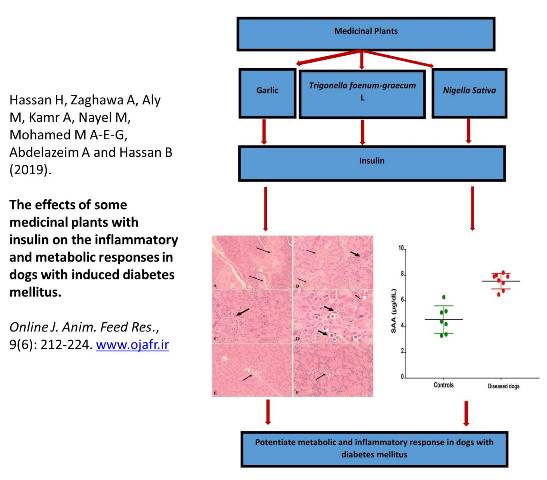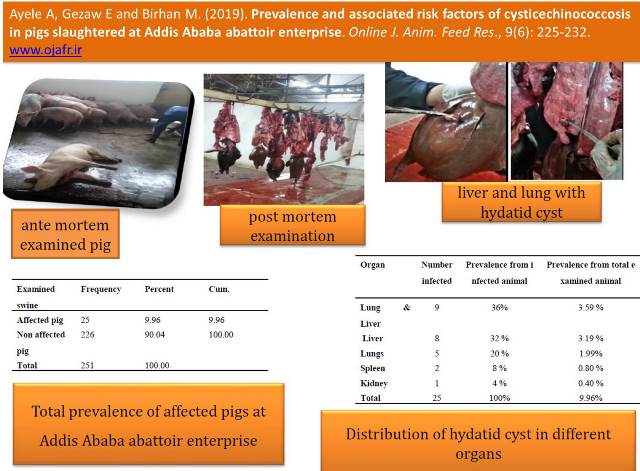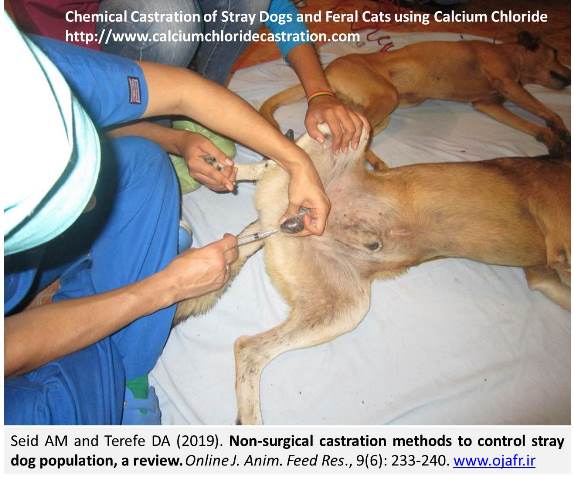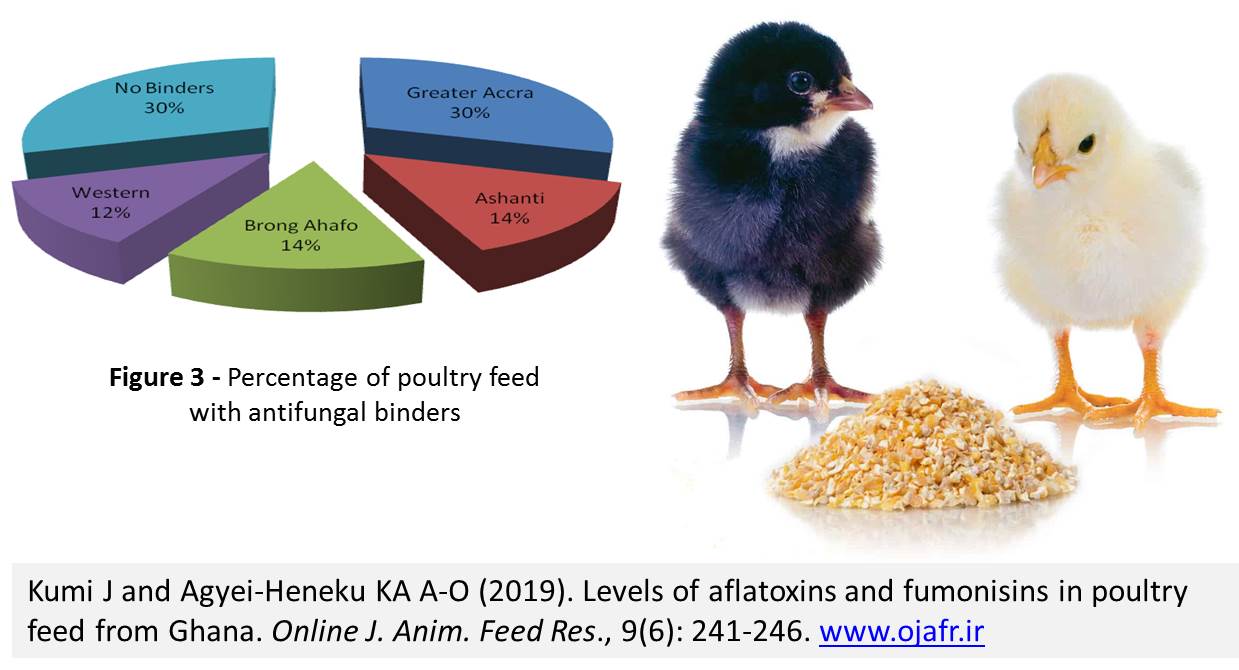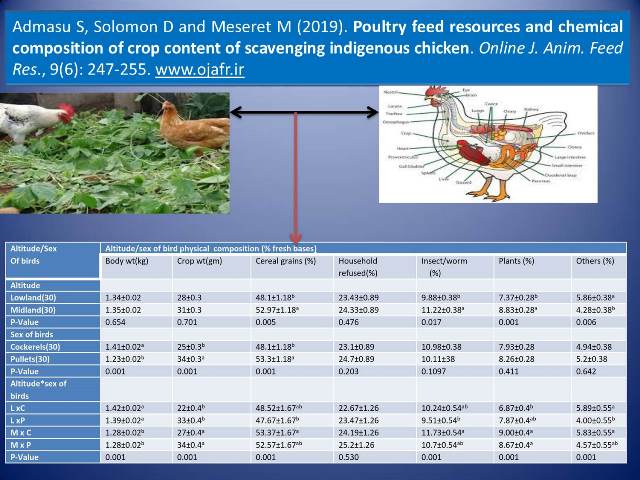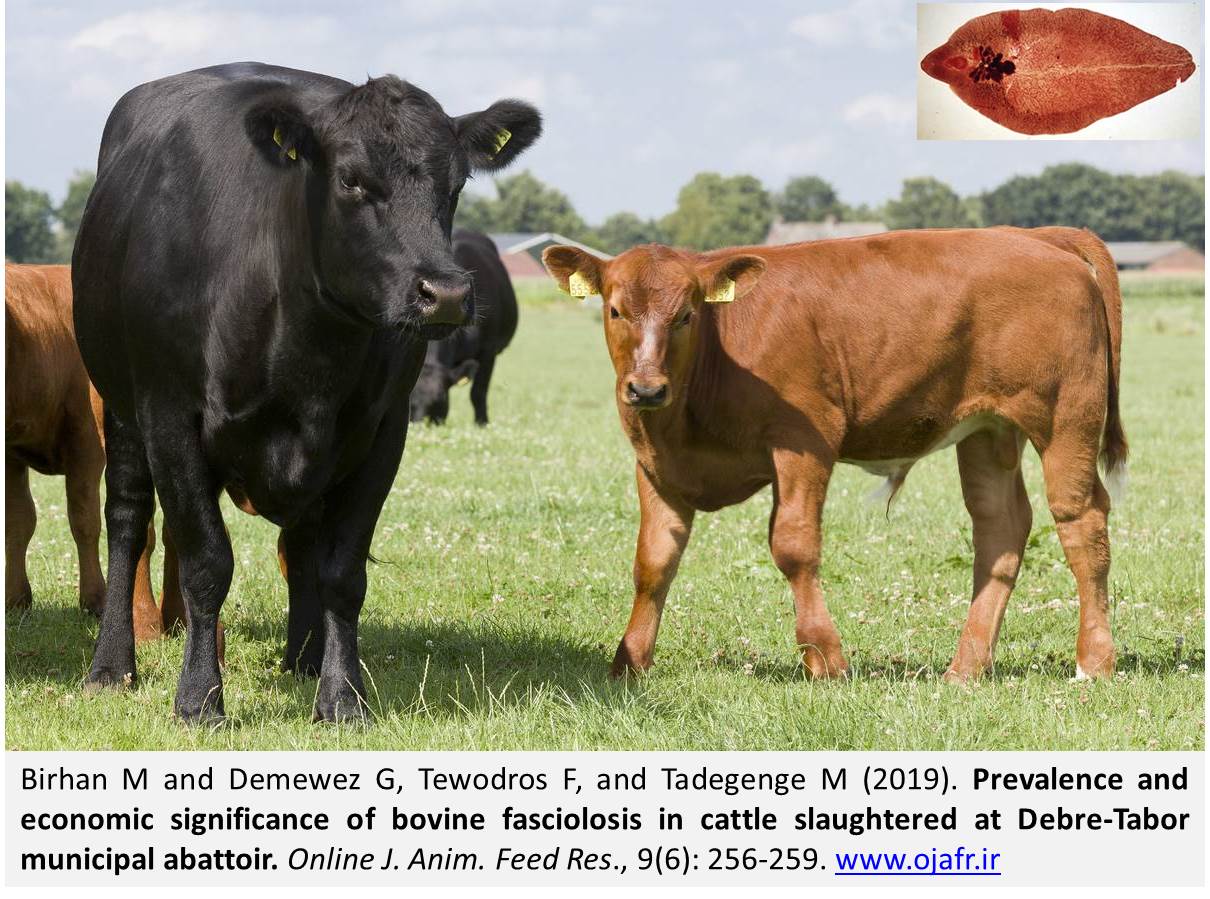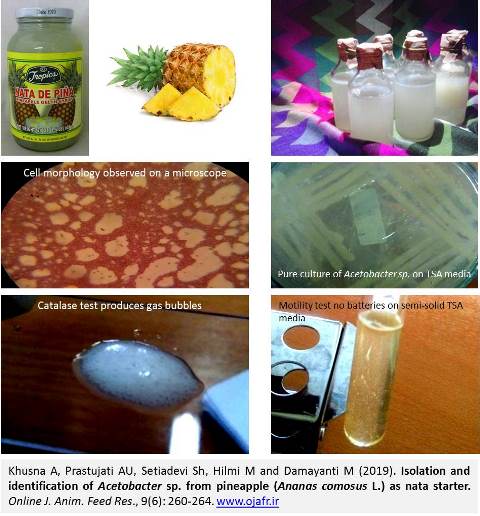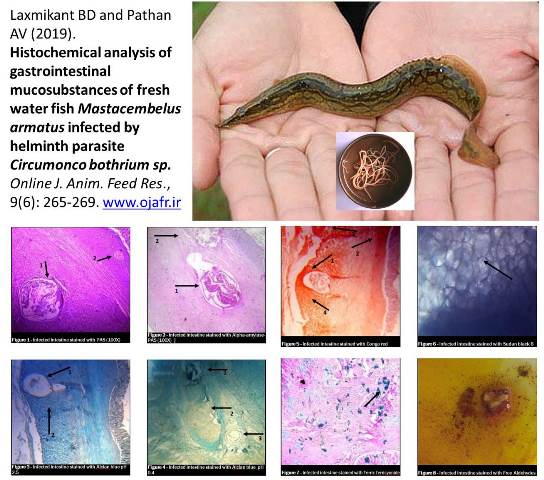Previous issue | Next issue | Archive
Volume 9 (6); November 25, 2019 [Booklet]![]()
The effects of some medicinal plants with insulin on the inflammatory and metabolic responses in dogs with induced diabetes mellitus.
Hassan H, Zaghawa A, Aly M, Kamr A, Nayel M, Mohamed M A-E-G, Abdelazeim A and Hassan B.
Online J. Anim. Feed Res., 9(6): 212-224, 2019; pii: S222877011900030-9
DOI: https://dx.doi.org/10.36380/scil.2019.ojafr30
Abstract
The goals of this study were to determine biochemical biomarkers and histopathological changes in addition to exploring insulin as mono-therapy as well as insulin plus some medical plants include Garlic, Fenugreek (Trigonella foenum-graecum L.) and Black seeds (Nigella Sativa) as feed additives in dogs with experimentally induced diabetes mellitus (DM). A total of 15 clinically apparent healthy adult dogs were involved in this study and divided into group 1: included five normal adult dogs served as non-diabetic control group, group 2: Included five adult dogs that were subjected to experimentally diabetes mellitus by intravenous (IV) injection of alloxan and treated by with insulin only and group 3: Included five adult dogs that were subjected to experimentally diabetes mellitus by IV injection of alloxan and treated by with insulin plus once daily supplement with herbal therapy. In conclusions, the therapeutic effects of some medical plants include Garlic, Fenugreek (Trigonella foenum-graecum L.) and Black seeds (Nigella Sativa) increased the potency and glycemic control of insulin in animals with diabetes mellitus. Therefore, it is recommended adding the previously mentioned herbs as feed additives to improve the potency of insulin to control DM in dogs.
Keywords: Dogs; Diabetes mellitus, Alloxan hydrate; Insulin; Insulin with herbal therapy
[Full text-PDF]
Prevalence and associated risk factors of cysticechinococcosis in pigs slaughtered at Addis Ababa abattoir enterprise.
Ayele A, Gezaw E and Birhan M.
Online J. Anim. Feed Res., 9(6): 225-232, 2019; pii: S222877011900031-9
DOI: https://dx.doi.org/10.36380/scil.2019.ojafr31
Abstract
A cross sectional study was conducted from January 2018 to April 2018 to determine the prevalence and associated risk factors of cystic echinococcosis in pig slaughtered at Addis Ababa abattoir enterprise, central part of Ethiopia. A total of 251 pigs were randomly sampled and routine meat inspection procedure was employed to detect the presence of hydatid cyst in the visceral organs (lung, liver, spleen and kidney), where 25 (9.96%) pigs were positive. Analysis of risk factors for occurrence of the disease revealed that there was statistically significant variation (P < 0.05) in swine with different body condition scores and age groups. However, significant variation was not observed (P > 0.05) across different sex and origin. Prevalence of distribution of hydatid cyst in different organs from total examined swine were 3.59%, 3.19%, 1.99%, 0.80%, 0.40%, for lungs and livers, livers, lungs, spleens and kidney respectively. In this study, the liver was found to be the most predominantly affected organ (6.77%) followed by the lungs (5.58%), spleen (0.80%) and the least affected organ was kidney (0.40%). As regards size of the cyst from total infected organs, organ with small sized cysts had the highest percentage (67.6%), followed by medium sized cysts (20.6%) and large sized cysts (11.8%). Livers (44.1%) were predominant organ infected with small cyst size while spleen (5.9%) and kidney (2.9%) have only small cyst size. Lungs (14.7%) and liver (5.9%) were infected with medium cyst size while only lungs (11.8%) have large cyst size. From the total of 34 (100%) affected organs, only 4 (11.8%) lungs have more than or equal to three cyst numbers while remaining 30 (88.2 %) affected organs were with less than three cyst numbers.
Keywords: Cyst number, Cyst size, Echinococcosis, Echinococcus granulosus, Hydatid cysts, Prevalence, Risk factors.
[Full text-PDF]
Non-surgical castration methods to control stray dog population, a review.
Seid AM and Terefe DA.
Online J. Anim. Feed Res., 9(6): 233-240, 2019; pii: S222877011900032-9
DOI: https://dx.doi.org/10.36380/scil.2019.ojafr32
Abstract
About 75% of dogs worldwide are free to roam and reproduce, thus creating locally overabundant populations. Problems caused by roaming dogs include diseases transmission to livestock and humans, predation on livestock, attacks on humans, road traffic accidents, and nuisance behavior. Nonsurgical fertility control is increasingly advocated as more cost-effective than surgical sterilization to manage dog populations and their impact. The aim of this review was to illustrate the spectrum of fertility inhibitors available for dogs. Although surgery is the most effective and safe procedure, it is also expensive to use of non-surgical, sterilization methods that would make male sterilization inexpensive, easy and fast for sterilization of large number of male dogs within short period of time to effectively contribute in curbing the growth of the stray dog population were introduced. Chemical sterilization methods so far employed included hormonal methods, immunocontraceptives and ınorganic chemo-sterilants (chemo-sterilants such as CaCl2, zinc gluconate neutralized by arginine (Neutersol) and hypertonic sodium chloride-NaCl solution. Intratesticular injection of calcium chloride, Zinc gluconate and 20% NaCl hypertonic solution showed a promising result as chemical sterilants. The review concluded that the main challenges for the future are evaluating the feasibility, effectiveness, sustainability, and effects of mass non-surgical sterilization campaigns on dog population size and impact as well as integrating nonsurgical fertility control with disease vaccination and public education programs. The review also showed the relative lack of research or knowledge related to fertility inhibitors in developing country as Ethiopia and suggested that more works is required in this country.
Keywords: Chemical sterilization, Dog population management, Fertility inhibitors, Stray Dogs.
[Full text-PDF]
Levels of aflatoxins and fumonisins in poultry feed from Ghana.
Kumi J and Agyei-Heneku KA A-O.
Online J. Anim. Feed Res., 9(6): 241-246, 2019; pii: S222877011800033-9
DOI: https://dx.doi.org/10.36380/scil.2019.ojafr33
Abstract
Mycotoxins are secondary fungal metabolites that contaminate animal feeds, crops and food. Globally, two major foodborne mycotoxins (aflatoxins and fumonisins) have been reported to affect the health and productivity of the poultry industry. Notwithstanding the health risks associated with these mycotoxins, no study has probably investigated the co-occurrence of aflatoxin and fumonisin levels in poultry feed produced in Ghana. The aim of the study was to investigate the levels of total aflatoxin (B1, B2, and G1 and G2) and fumonisin B1 (FB1) levels in poultry feed produced in Ghana. Total aflatoxins and fumonisin B1 were analyzed in 100 poultry feed samples collected from farmers from four major poultry producing regions in Ghana. High performance liquid chromatography (HPLC) was used to measure total aflatoxin levels whiles a fluorometer reader was used to measure the levels of fumonisin B1. Total aflatoxin and FB1 contaminations were detected in 100% of the feed samples in a range of 0.02-22 ppb and 0.5-4.6 ppm, respectively. Three samples representing, 3% out of the 100 samples screened were detected to have total aflatoxin levels greater than 20 parts per billion Fumonisin levels detected in the poultry feed were within the permissible level of 50 parts per million in poultry feed. Seventy out of the 100 poultry feed samples collected had their feed treated with fungal binders. In present study, we have probably for the first time in Ghana shown the levels of mycotoxins in poultry feed and the need to monitor animal feed made from cereals.
Keywords: Poultry feed, Total aflatoxin, Fumonisin B1, Ghana
[Full text-PDF]
Poultry feed resources and chemical composition of crop content of scavenging indigenous chicken.
Admasu S., Solomon D. and Meseret M.
Online J. Anim. Feed Res., 9(6): 247-255, 2019; pii: S222877011800034-9
DOI: https://dx.doi.org/10.36380/scil.2019.ojafr34
Abstract
The study was conducted in Genji district of West Wollega Zone with the objectives of characterization of scavenging poultry feed resource base (SFRB) and evaluation of composition of crop content of scavenging indigenous chicken. A total of 60 sampled grower chickens (50% female and 50% male) at an age of 4-6 month, were purchased fromrural farmers and slaughtered during early dry season to study the physical characteristics and chemical composition of the crop content. About 50.7, 23.85, 12, 8.4 and 5.2% of the crop contents of experimental chickens were cereal grains, house-hold leftover/kitchen waste, animal proteins (insects/worms), plant/leaves, and none feed materials respectively. There was variation in composition with altitude and sex of birds slaughtered. The mean weight of the crop content obtained from the cockerels (25 g/day) was significantly lower (P < 0.05) than that of the pullets (34 g/day, but there were no significant difference between altitude in mean weight of crop content of the experimental birds slaughtered. According to the result of laboratory analysis, the dry matter, ether extract, ash, crude protein, crude fiber, nitrogen free extract and calculated metabolizable energy content of the crop content were 89.37, 2.48, 14.82, 10.88, 9.35, 62.61% and 2552.3 kcal/kg), respectively. The percent composition of dry matter, ash, crude fiber, and calcium were significantly (P < 0.05) higher in the crop content of pullets than in the crop content of cockerels, while crude fiber and crude protein level of the crop contents of the chickens of the mid altitude were significantly higher (P < 0.05) than that of the crop content of chickens of the low altitude. The study showed that the nutrient contents of Scavengable feed resources were below the bird’s requirements for optimum productivity. In conclusion, Poultry keepers must provide sufficient supplementation to their birds rather than simply throwing leftovers away to the birds.
Keywords: Chemical Composition, Crop Content, Indigenous Chicken, Scavengable Feed Resources.
[Full text-PDF]
Prevalence and economic significance of bovine fasciolosis in cattle slaughtered at Debre-Tabor municipal abattoir.
Birhan M and Demewez G, Tewodros F, and Tadegenge M.
Online J. Anim. Feed Res., 9(6): 256-259, 2019; pii: S222877011800035-9
DOI: https://dx.doi.org/10.36380/scil.2019.ojafr35
Abstract
A cross sectional study was carried out from January, 2018 to June 2018 to determine the abattoir prevalence and economic loss associated with fasciolosis in cattle slaughter at Debretabor municipal abattoir. From the total of 350 examined cattle, 100 (28.6%) were positive for fasciolosis. Highest prevalence was observed in poor body condition cattle 26 (45.6%) followed by medium 54 (26.7%) and good body condition cattle 20 (22%), respectively. There was also significant difference in different age group. The highest 18 (40.9%) prevalence was in young cattle and the lowest 82 (26.8%) found in adult animals. Also the prevalence of bovine fasciolosis was highest in local breed 90 (32.2%) than in cross breed 7 (3.3%) with statistical significant difference (P < 0.05). The total annual economic loss was estimated 60746.4 ETB. The study showed that the prevalence and money loss due to fasciolosis in cattle slaughtered at Debretabor municipal abattoir was high. Hence, immediate prevention and control of fasciola is needed.
Keywords: Cattle, Debretabor, Economic significance, Fasciolosis, Prevalence
[Full text-PDF]
Isolation and identification of Acetobacter sp. from pineapple (Ananas comosus L.) as nata starter.
Khusna A, Prastujati AU, Setiadevi Sh, Hilmi M and Damayanti M.
Online J. Anim. Feed Res., 9(6): 260-264, 2019; pii: S222877011800036-9
DOI: https://dx.doi.org/10.36380/scil.2019.ojafr36
Abstract
The purpose of this study was to isolate and identify the morphological and biochemical properties of Acetobacter sp. Isolation is done by growing bacteria taken from pineapple (Ananas comosus L.) juice on Tryptic Soy Agar (TSA) media. Identification was carried out by biochemical tests namely catalase, motility, and oxygen use tests. The study was designed per descriptive analysis by evaluating and describing the collected data. The results of the morphological experiments showed that bacterial isolates isolated from pineapple had a milky white color, round shape, small size, smooth surface, flat elevation and gram-negative type. Biochemical tests showed positive reactions in the catalase test because of break-down capability of hydrogen peroxide by the enzyme catalase, while it was negative in the motility test because bacteria form a non-motile free sphere. Bacterial isolates showed a positive reaction in testing the use of oxygen because Acetobacter sp. need free oxygen for growth and activity. Isolation of Acetobacter sp. pineapple origin has macroscopic characteristics that are milky white color, round shape, smooth surface, and flat elevation. The results of the identification of Acetobacter sp. pineapple origin showed a positive reaction to the catalase test, which is a gram-negative bacteria and has a round shape. Future studies are recommended to conduct a polymer chain reaction test (PCR) to identify the strain of acetobacter sp.
Keywords: Acetobacter sp., Nata, Pineapple, Starter
[Full text-PDF]
Histochemical analysis of gastrointestinal mucosubstances of fresh water fish Mastacembelus armatus infected by helminth parasite Circumonco bothrium sp.
Laxmikant BD and Pathan AV.
Online J. Anim. Feed Res., 9(6): 265-269, 2019; pii: S222877011800037-9
DOI: https://dx.doi.org/10.36380/scil.2019.ojafr37
Abstract
Present study was conducted to investigate the histochemical changes induced by Circumonco bothrium sp. in the intestine of freshwater fish Mastacembelus armatus. During present investigations the infection of Circumonco bothrium sp. in Mastacembelus armatus with various histochemical reactions showed localization of localization of carbohydrate, protein, lipid and glycogen. During histochemical study intestine infected by cestodes, the numbers of mucous cells those containing acidic or mixed glycoconjugates were significantly higher than those seen on sections from uninfected fish, which is a protective interaction of the host against parasitic infection. In the current study, a highly significant increase in the number of mucous cells was seen within the infected intestines of Mastacembelus armatus when compared to uninfected counterparts.
Keywords: Circumonco bothrium sp., Histochemical, Intestine, Mastacembelus armatus
[Full text-PDF]
Previous issue | Next issue | Archive![]()
| < Prev | Next > |
|---|

